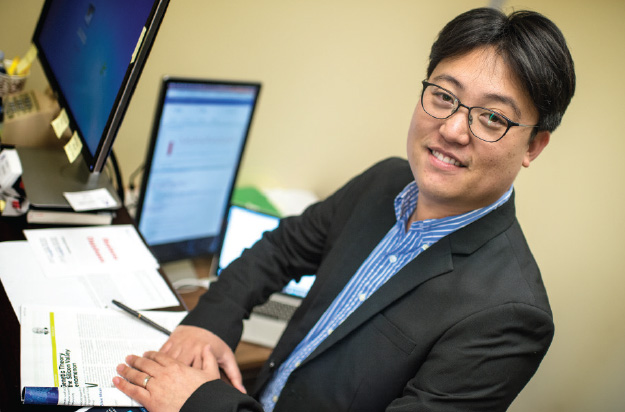Winter 2016: Energy Evolution
From carbon dioxide conversion to landfill mining, researchers at UTA are seeking viable alternative energy options.
Skip to content. Skip to main navigation.
From carbon dioxide conversion to landfill mining, researchers at UTA are seeking viable alternative energy options.
Found in everything from space shuttles to dental fillings, composite materials have thoroughly infiltrated modern society. But their potential is still greatly untapped, offering researchers ample opportunity for discovery.
Within the particle showers created at the Large Hadron Collider, answers to some of the universe’s mysteries are waiting.
Model systems like pigeons can help illuminate our own evolutionary and genomic history.
UT Arlington's tiny windmills are bringing renewable energy to a whole new scale.
The stability of our highways, pipelines, and even manholes is reaching a breaking point.
Scientists believe they have discovered a subatomic particle that is crucial to understanding the universe.
UT Arlington researchers unlock clues to the human body’s most mysterious and complex organ.
UT Arlington researchers probe the hidden world of microbes in search of renewable energy sources.
Wounded soldiers are benefiting from Robert Gatchel’s program that combines physical rehabilitation with treatment for post-traumatic stress disorder.
Tiny sensors implanted in the body show promise in combating acid reflux disease, pain and other health problems.
Nanotechnology researchers pursue hybrid silicon chips with life-saving potential.
Biomedical engineers combat diseases with procedures that are painless to patients.

In the high-tech industry, mergers and acquisitions occur at the speed of light. Now, a business assistant professor has created a new method of analysis that not only improves market intelligence, but also explains mergers and acquisitions and identifies potential targets for future moves.
Gene Moo Lee says industry giants like Google spend billions of dollars each year acquiring smaller firms, but face a challenge when looking for companies with the products or tech they need. That’s where he and his co-researchers come in.
“Our new approach uses big-data analytics and a text-mining technique called ‘topic modeling’ to identify potential matches,” Dr. Lee explains. “This data-driven, analytics-based approach has proven effective in explaining mergers and acquisitions in the start-up world and complements existing toolkits for measuring business proximity.”
Topic modeling analyzes the language used in publicly available business descriptions around shared products, technologies, and markets. The business proximity of the start-ups is then quantified and the likelihood of a possible merger between two companies is computed based on factors like geographic vicinity and common investor ownership.
Lee’s team has developed a cloud-based information system and launched a new business—Topic Technologies—that offers market intelligence services to companies across the tech sector.